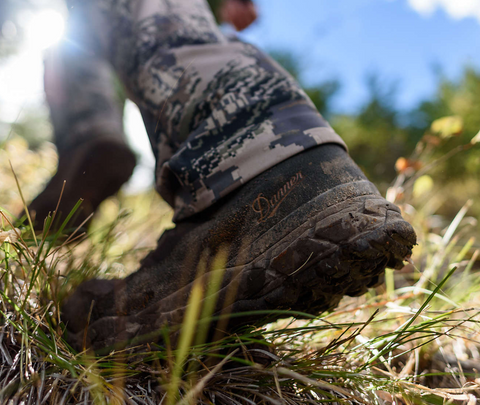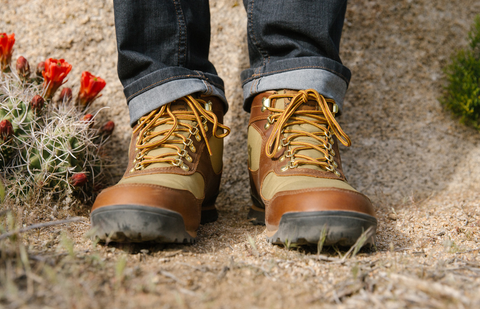Boots for the outdoors: The right stuff
Choosing the best boots for Montana outdoors
Your feet are probably the most important aspect of your Montana field campaign, and a well-fitted boot is going to help you avoid injury in a couple of ways.
Here are some tips from Kalispell podiatric physician Eric Ploot on how to keep your feet healthy when enjoying the Montana backcountry.
Choose a great boot: Danner boots provide exceptional wear and reliability in the Montana backcountry.
Danner boots fit great, right out of the box (danner.com)

Danner boots are made for the rugged Montana backcountry pursuits, such as archery elk hunting. (Jackson Reese photo/Montana Living. Boots courtesy of Danner, www.danner.com)

Lightweight boots from Garmont are comfortable right out of the box.
Dr. Ploot, an avid hiker and hunter, prefers a sturdy, over-built boot for backcountry hiking and hunting, where you are off trail most of the time.
Ploot says to choose a boot that has good drying capacity, especially for Montana's warmer fall hunting seasons.
Moisture is your feet's enemy, so he recommends carrying extra socks to change into during the day. "That's going to make a big difference, bringing those extra socks," he said. "Moisture inside the boot is only going to make blistering worse." Insulated boots also cause sweating, another enemy of feet, Ploot said.

Ploot said it's a good idea to bring an elastic wrap, in case of ankle sprain, which is an inversion of the ankle. "People can do a host of different things to their ankle, from a sprain to a break, but it's often not just one single structure in the foot that is injured," he said. When his son sprained an ankle in Glacier National Park, far from their vehicle, the ankle wrap helped stabilize the injury and allowed them to get him out of the backcountry without further injury. "When you start to treat the injury in the field, you're much better off," Ploot said. "If you limp your way home for five miles, you're just going to injure your foot structure further."
Be sure to bring blister treatment, such as Moleskin, Ploot said. Use it with new boots at the first sign of a hot spot and on the first few hikes of the year. If you are hurting when you get home, see a doctor, Ploot said. Some injuries are deep inside the foot and take a trained physician to detect how to treat them.
Ploot said a wider boot is more important than a tall boot, when hiking on moderate terrrain, but for extreme off-trail use, a taller, over the ankle boot is recommended.
If you tend to have tight Achilles, get some doctor-recommended stretches that will help loosen up this important tendon. This tendon is able to support and propel your body's weight and is super strong — and super important. "You'd be hard pressed to find a muscle tendon in the human body that is stronger," Ploot said.
The weekend warrior carrying a heavy backpack is prone to injury, Ploot said, so prepare your body in advance of hiking and hunting season. •




Leave a comment